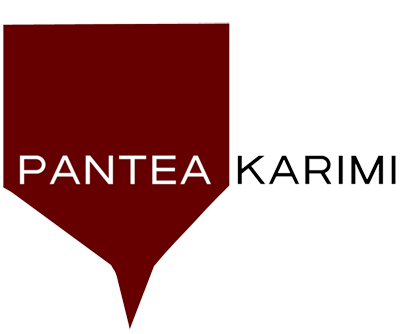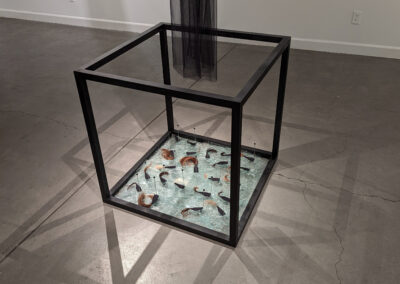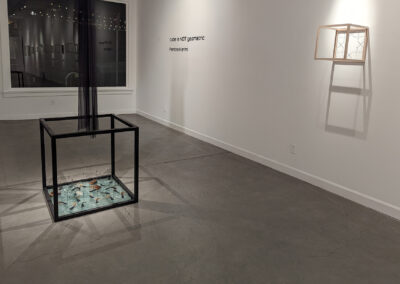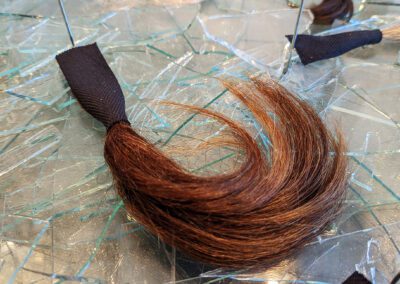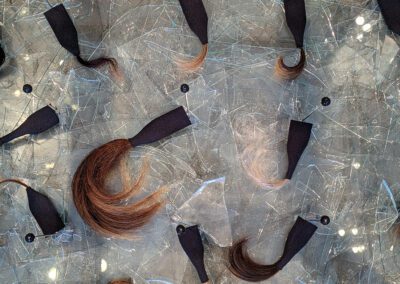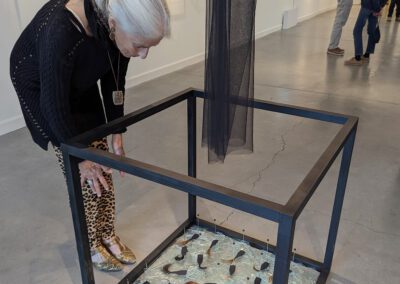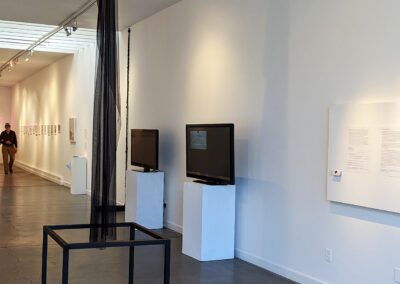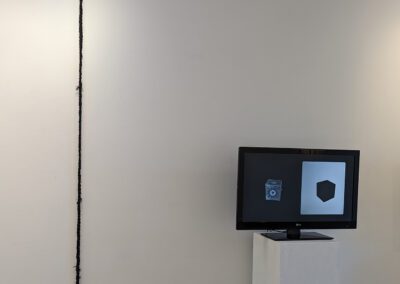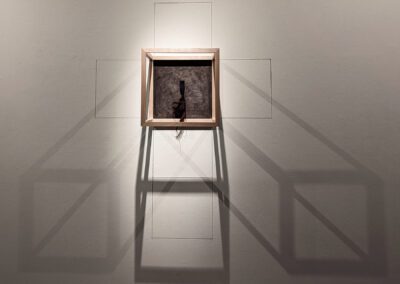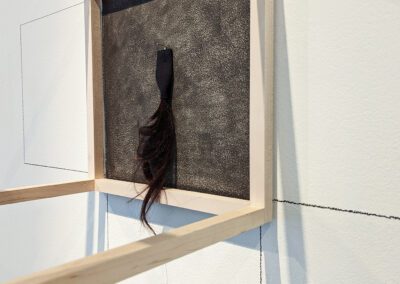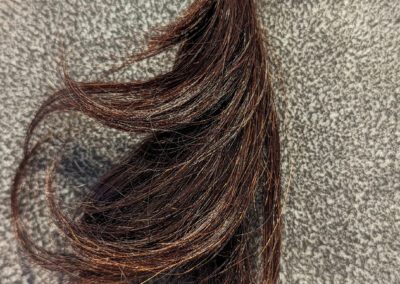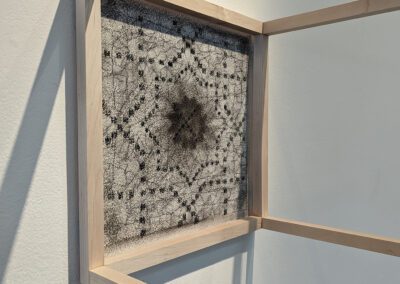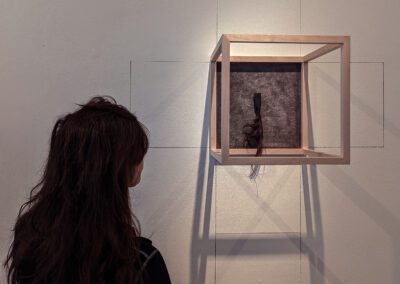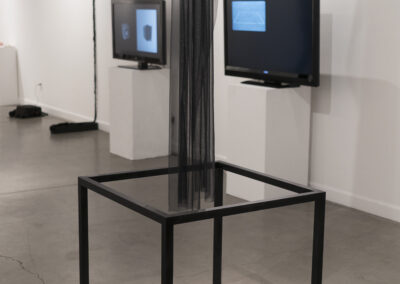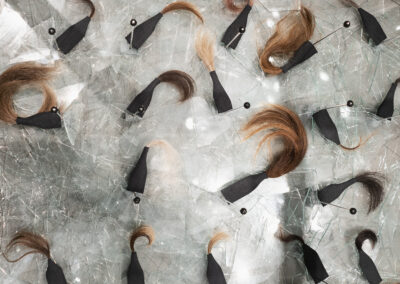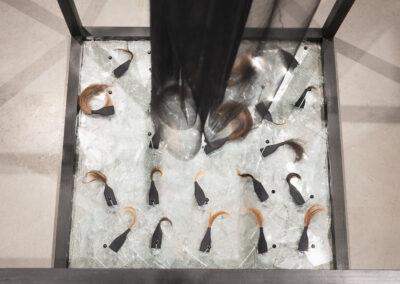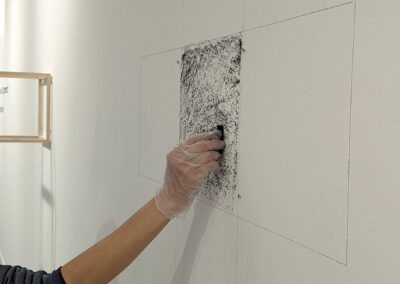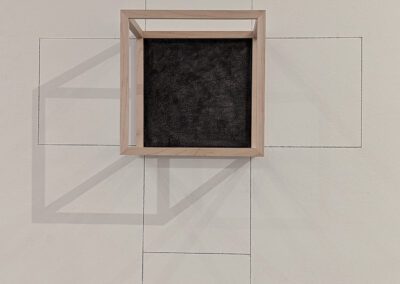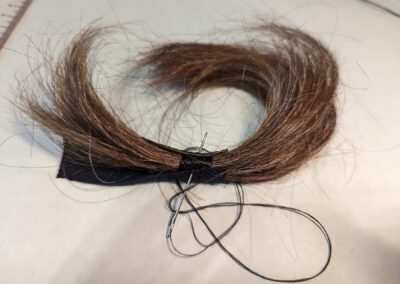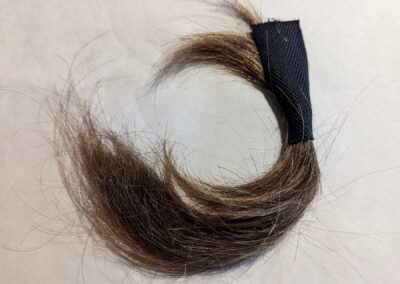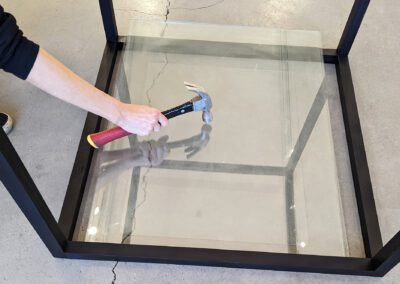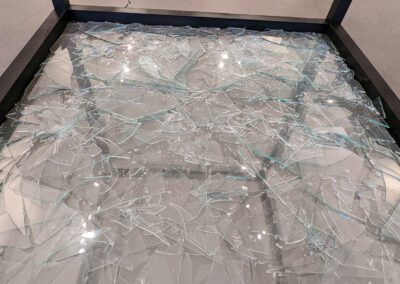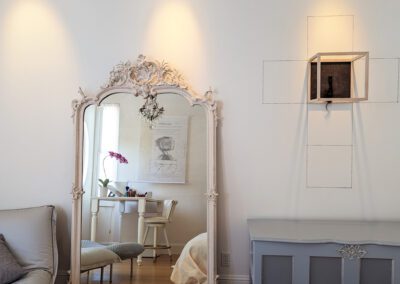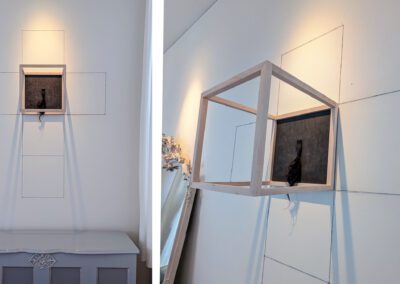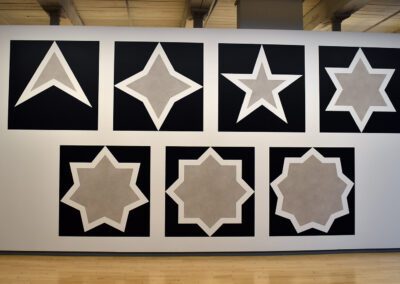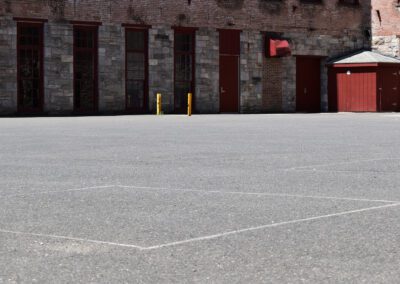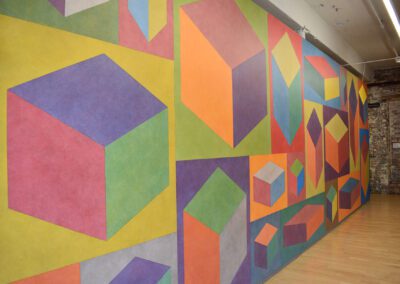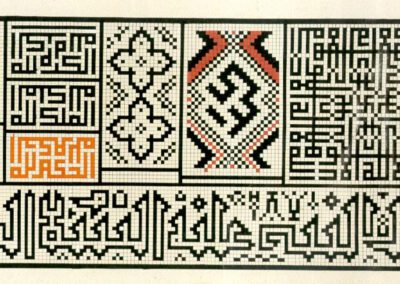cube is NOT geometric, 2022
Solo Exhibition, Mercury 20 Gallery
At the Massachusetts Museum of Contemporary Art (MASS MoCA) in North Adams, MA, during a month artist residency in mid-2022, I developed more in-depth narratives about my work on geometry; I saw my past works in a new light that brought broader identity-politics issues and my voice into the equation as an Iranian-American artist. I was particularly inspired by LeWitt’s Distorted Cubes as well as the eight-pointed and twelve-pointed stars which are identical to those used in historic mosques in Iran. I have been working on these patterns and tiles using research on the Topkapi scroll, a late medieval Iranian architectural document, housed at the Topkapi Palace in Türkiye. Investigating and reading more about Sol LeWitt’s Distorted Cubes, my obsession with the cube re-surfaced but I observed how different my perspective was.
I studied science at school in post-revolutionary Iran, where learning was intertwined with religious indoctrination through teaching the Arabic language and subjects on Islamic traditions and practices. Kaaba was one of the first extensive “geometric” objects I discovered in our religious courses. The word means cube in Arabic and it is the most sacred Islamic site. In our geometry class, the cube was also the first three-dimensional geometric shape I explored and constructed with paper. I made a few production mistakes, and my cube’s vertexes didn’t exactly match, resulting in a “distorted” cube, and being rejected by my teacher. Cube became and has remained a challenging, complex shape to comprehend from geometric, scientific, and religious perspectives. My cube consciously and conscientiously cannot be geometric.
In cube is NOT geometric, by utilizing video, animation, wall drawing, and sculpture, I investigate the cube relevant to my personal experiences in two contexts political and religious. The distorted shadows on the wall under my perfect cubes are reminiscent of LeWitt’s Distorted Cubes.
While I was working on this exhibition, the Iranian women’s protest against compulsory hijab in mid-September 2022 transpired. I was a small child when I had to wear the mandatory hijab at school and other public places in Iran. All these years being outside Iran, I thought I had escaped the coercive force of compulsion but the death of Mahsa Amini at age 22 while in police custody took me back to the first time I was detained, at age 21, on the street by morality police. The disturbing memory of that incident resurfaced and the flashback took me to a very dark, emotional place. As a female artist with firsthand experiences with the morality police, I was compelled to respond and extend my exhibition’s content. On October 6th, 2022, I asked a friend to donate her hair and I posted a video of her cutting her hair on Instagram which resulted in other women in my local and broader communities expressing their desire to also participate. Consequently, I filmed more volunteer women, mainly non-Iranians, cutting their hair. Their videos with messages of support and solidarity went viral on Instagram. I had two weeks, before the exhibition opening, to create Naked Cube which included the donated hair pieces.
Works and their descriptions:
Contorted Shadows, three hand-made wood cube sculptures, each 12 x 12 x 12 inches, charcoal wall drawings (eight-point stars extracted from Topkapi scroll), shadows, and hair, 2022.
Three cube sculptures hold charcoal drawings, two of which are the eight-point stars from the Topkapi scroll. While the cubes are perfect, their distorted elongated shadows on the wall, in various shades, are reminiscent of LeWitt’s Distorted Cubes. They symbolically represent my distorted vision of the cube.
The black charcoal center in Cube ii symbolically represents the Kaaba and its net represents the Christian cross.
Naked Cube, hand-made wood cube sculpture (30 x 30 x 30 inches), tulle veil (10 feet), hair, fabric, steel rods, and shattered glass
I stitched each donated piece of hair to a black cone-shaped fabric where the hair reveals itself from the narrow bottom end, as a metaphor for the struggle, freedom, and ultimately the agency over bodily-autonomy Iranian women demand. The hair pieces are installed inside an open black cube structure, referencing Kaaba, laid on broken glass pieces, with a 10 feet long veil hanging over them from the ceiling; exposing both Iranian women’s struggle and bravery. Naked Cube is dedicated to Iranian women, and my cousin, Sadaf, who was cornered and beaten by the morality police during a protest on October 9th in Shiraz, Iran.
Harvested Braid, a collaboration with Svetlana Gous, 14 feet, October 2022.
The flax crop from the summer of 2021 was grown in Ukraine, Romania, and Poland. Spun dyed in Lithuania, and the Warp used to create the braid, is for an 8-shaft floor loom.
Videos & Stop Motion Animations
Disposable Cubes, four multi-screen videos, 2022
In my early education, the cube was the first shape I learned about in my geometry and religious courses (representing Kabaa, the sacred Muslim site). Videos show me at the MASS MoCA museum, kicking my hand-made cube playfully in front of LeWitt’s wall paintings and on the ground in square grids (outside the museum). LeWitt’s wall paintings include geometric shapes and eight-point stars, which are commonly found on Iran’s historic religious structures. By kicking the cube I reject the geometry and “distorted views“ of myself; protesting my childhood education and life experiences as an Iranian woman. The piece is an homage to Sol Lewitt’s “Distorted Cubes.”
Two of four videos, upon Karimi’s request, were taken by Patricia M. Brace at Sol LeWitt: A Wall Drawing Retrospective, MASS MoCA, North Adams, MA, June 2022
Two videos by Pantea Karimi were recorded at MASS MoCA ground, North Adams, MA, in June 2022.
Permission for filming at Sol LeWitt: A Wall Drawing Retrospective at MASS MoCA’s mill building was granted by Sol LeWitt Estate in 2022.
A Preludial Implosion, stop motion animation, 31 seconds, 2022
Two side-by-side stop-motion animations using my hand-made paper cubes express my cultural identity intertwined with religion and politics. I made the twelve-point stars cube with the pattern extracted from a late Medieval Iranian document on geometry, called the Topkapi scroll juxtaposed with the cube representing Kaaba (the Muslim sacred site).
Plato in the dialogue Timaeus c.360 B.C. wrote about Platonic solids in which he associated each of the four classical elements -earth, air, water, and fire- with a regular solid. Earth was associated with the cube.
Video performance: Staged Circumambulation, Nov 19, 2022
Mercury 20 Gallery, Oakland, CA. Performers: Martha S., Mel D., Jordan K., Tara D., Jennifer L., Victoria H., Danielle W.
Six of the videos of volunteer women cutting their hair
Volunteer women who donated their hair:
Dr. Ladan, A. (Curator of South Asian and Islamic Art at ), Dr. Persis, K. (Neda Nobari Distinguished Chair, Center for Iranian Diaspora Studies @San Francisco State University), Summer B., Heather W., Joelle B., Jordan K., Valerie B., Sahba S., Mahsa V., Roya P., Anahita B., Sara A., Fariba B., Arezou P., Hamideh G., Sara T., Junko T., Johanna P., Jennifer L., and Victoria H.
The 10th-century poet Ferdowsi in Shahnameh: Book of Kings, referred to the hero Siavash’s wife cutting “her musky tresses” to grieve for and protest his death.
Stanford University
Print on Purpose, Freedom and Justice for Iranian Women
A printmaking workshop with students in the Print on Purpose course, at Standford University’s d. School occurred on Nov 4, 2022. Karimi was invited to guide a printmaking workshop using trace monotype printmaking to create images of hair as a form of activism and as a visual approach to convey messages. The choice of subject matter, hair, was used as a deliberate and symbolic choice that carries social or cultural significance not only for Iranian women but also for many other cultures around the world.
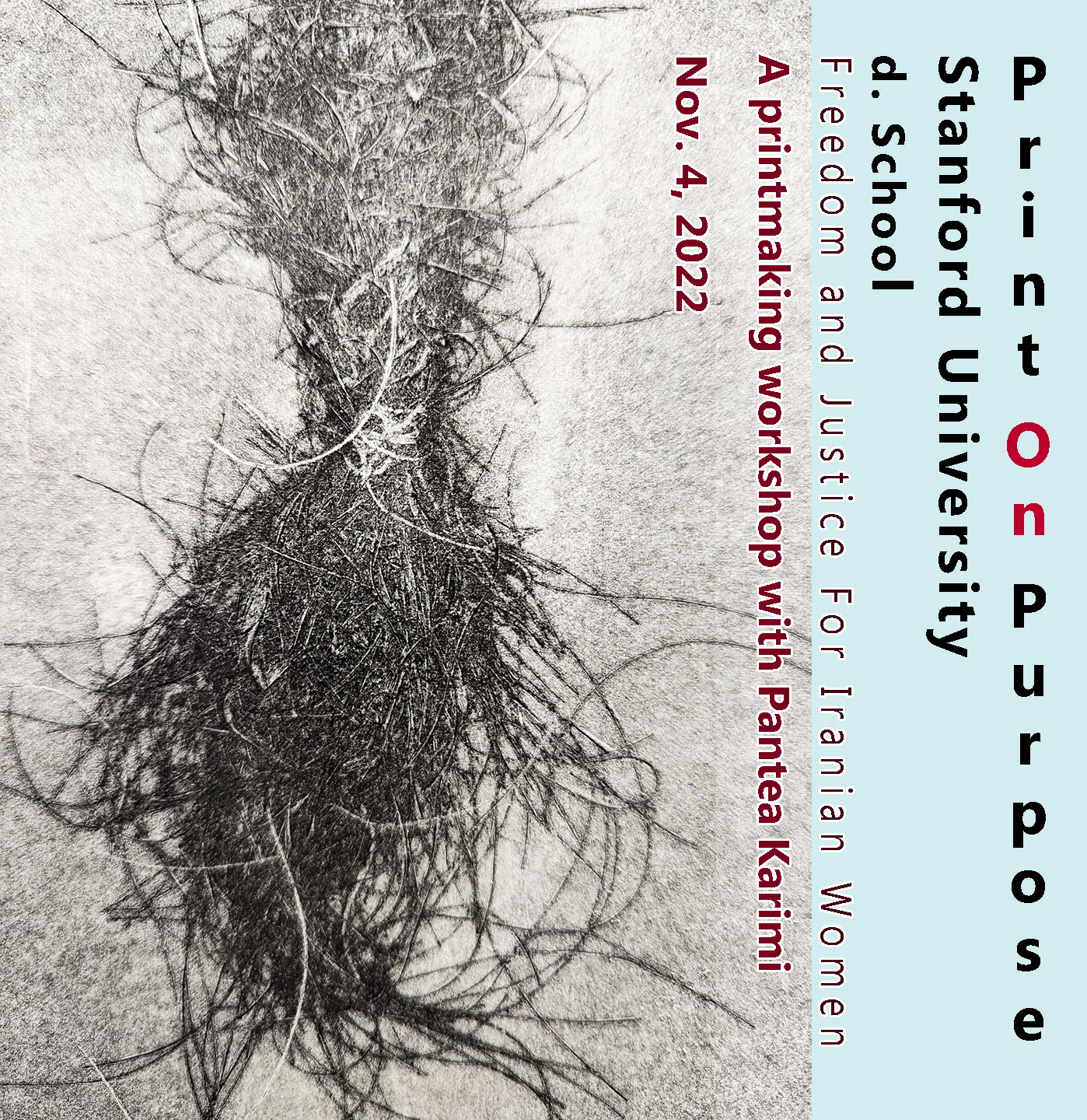
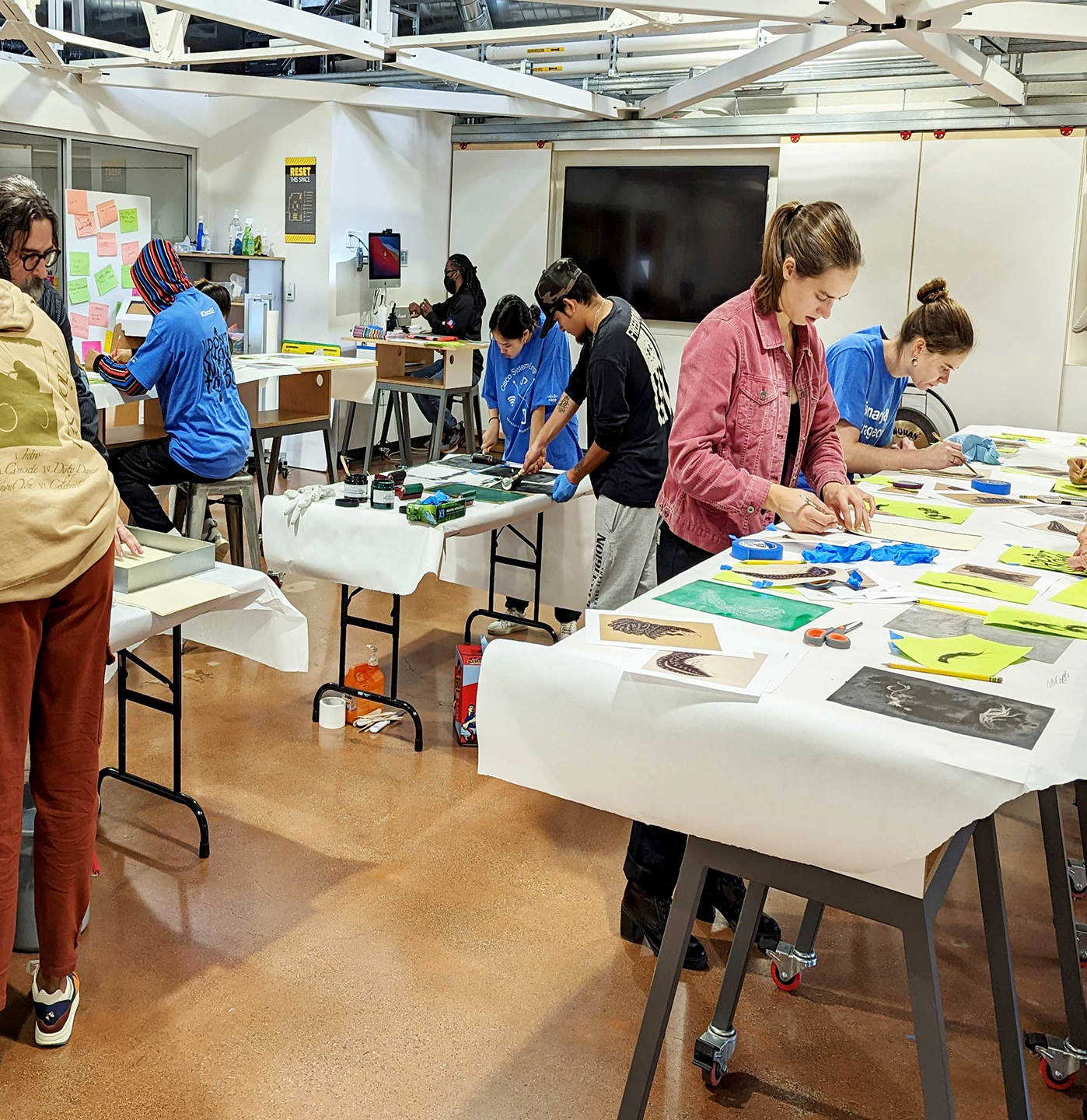

Inspiration and Research
Square Kufic is an Arabic script. The script was originally created with bricks and tiles in Iran, during the medieval period, functioning as pixels.
Arabic and Persian languages use similar alphabets but the languages don’t share the same origin. Below are examples of tile patterns and Square Kufic script, functioning as pixels, from the Topkapi scroll, in late medieval Iran.
Sol LeWitt: A Wall Drawing Retrospective at the mill building at MASS MoCA in June 2022 and MASS MoCA ground. Distorted Cubes and 8-point and 12-point Stars wall drawings.
In Williams College Museum of Art’s exhibition catalog, David S. Areford writes: “The cube-which was first featured in LeWitt’s structures in 1960s- becomes an incubator for new forms, as well as the site of instability and distortion.”
